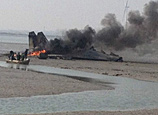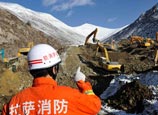
TOKYO, April 1 (Xinhua) -- Japanese researchers announced recently that a sort of shellfish called Thais clavigera disappeared in a 30-km coastal area near Japan's crippled Fukushima Daiichi nuclear plant.
Researchers from Japan's National Institute for Environmental Studies and National Institute of Radiological Sciences conducted the study last April on shellfish's living status in 43 places from Japan's Chiba to Iwate Prefectures for four months.
The team found that the Thais clavigera was extinct in eight of ten places within the 20-km-radius alert zone of the nuclear plant, which was damaged by tsunami in March 2011 and triggered the world' s worst nuclear disaster since Chernobyl in 1986.
Other shellfish species, such as Cellana grata, were found in the alert zone but the amount of them declined, with high dose of radioactive materials inside their bodies, according to the researchers.
Thais clavigera, a kind of shell that widely lives across Japan, was found in most places that had been surveyed, including 25 of 33 places outside the alert zone, said the researchers.
Toshihiro Horiguchi, a researcher from the environmental institute and the head of the team, said that it is a rare occurrence that Thais clavigera entirely disappeared from a 30-km long area, adding the extinct was probably caused by the nuclear crisis.
The link between the disappearance and the catastrophic tsunami was excluded as the shell was also found in other areas that affected by the disaster, according to the team.
The researchers made the report in an annual meeting of the Japanese Society of Fisheries Science last Wednesday and will further study links between the extinct and nuclear crisis.
















 Gangs smuggling case involving refined oil seized in China's Zhejiang
Gangs smuggling case involving refined oil seized in China's Zhejiang


![]()
